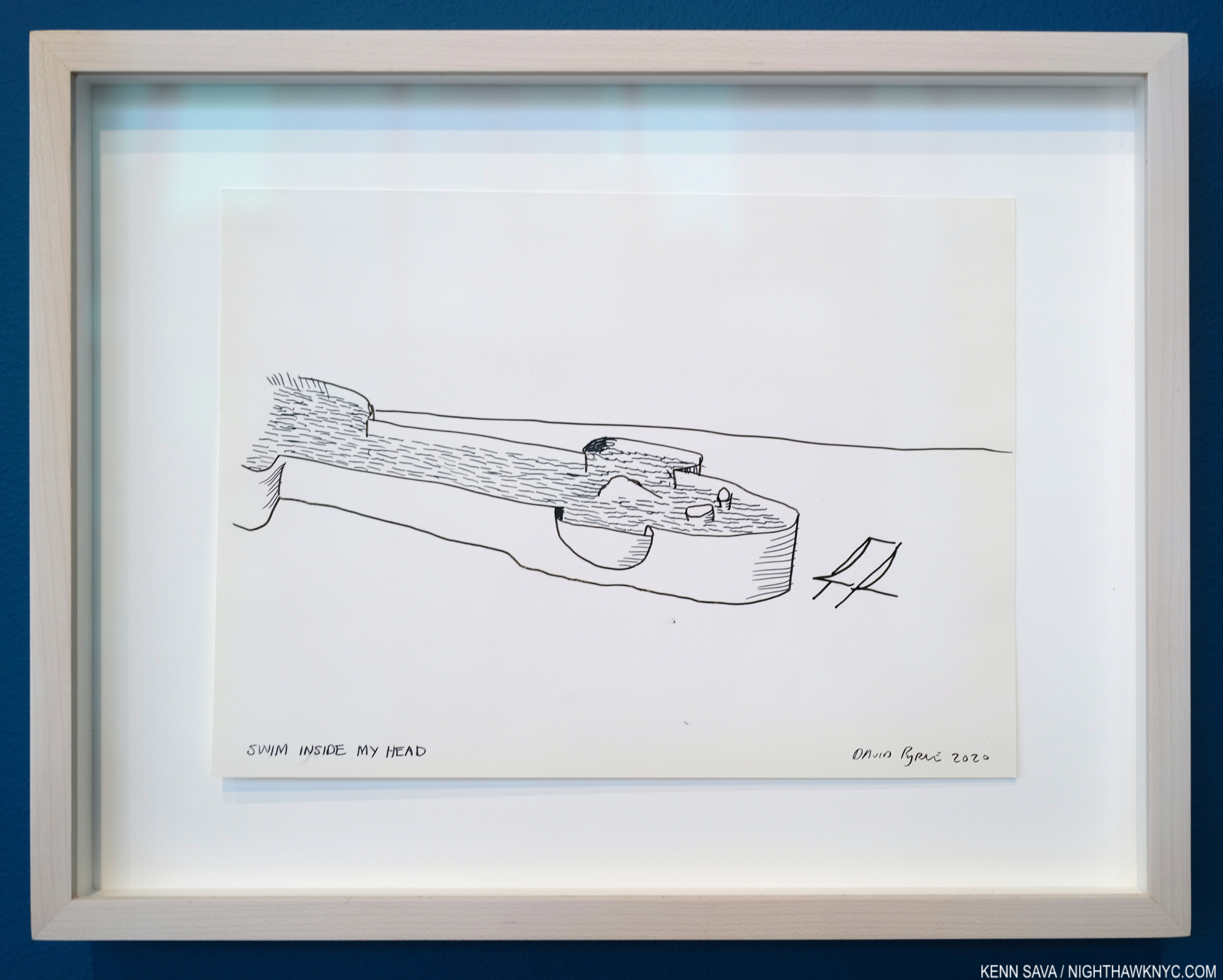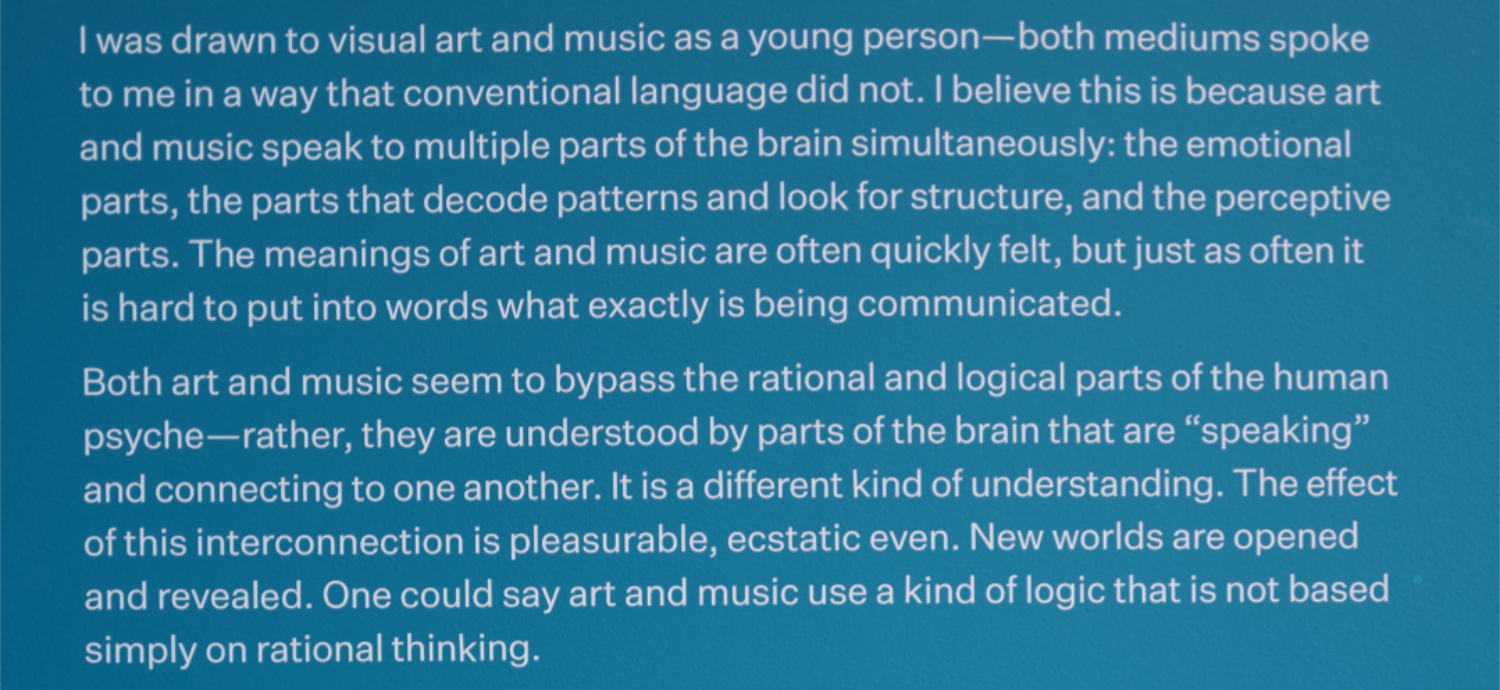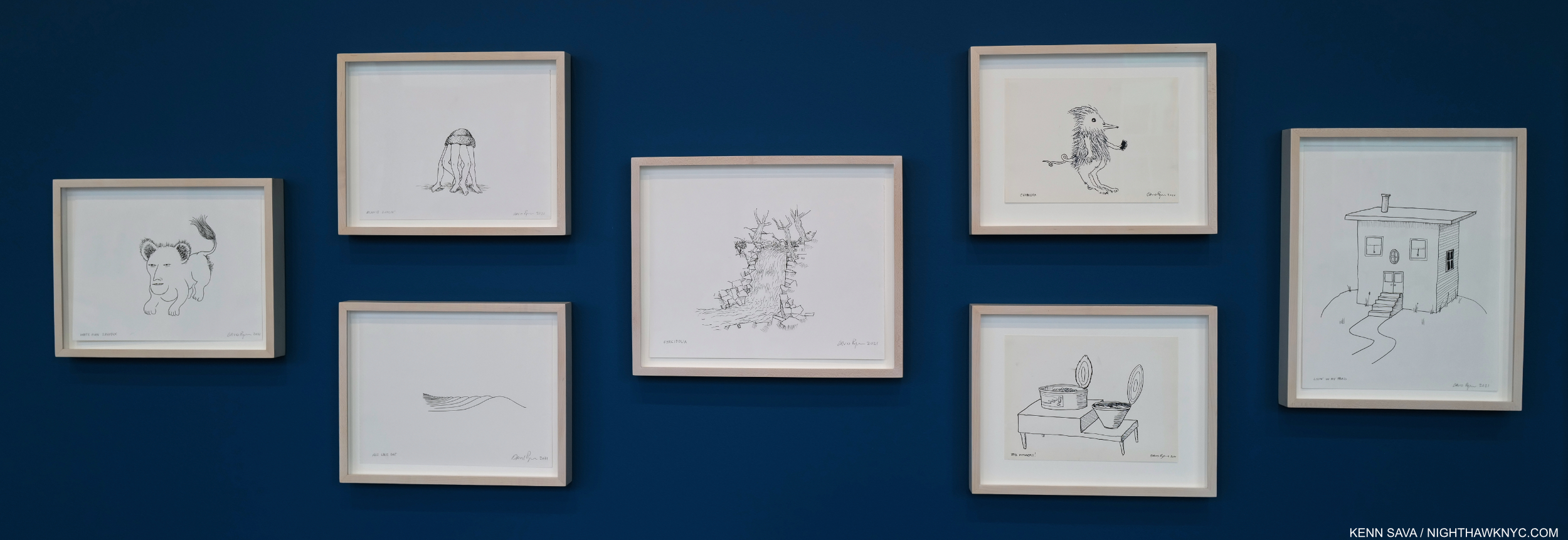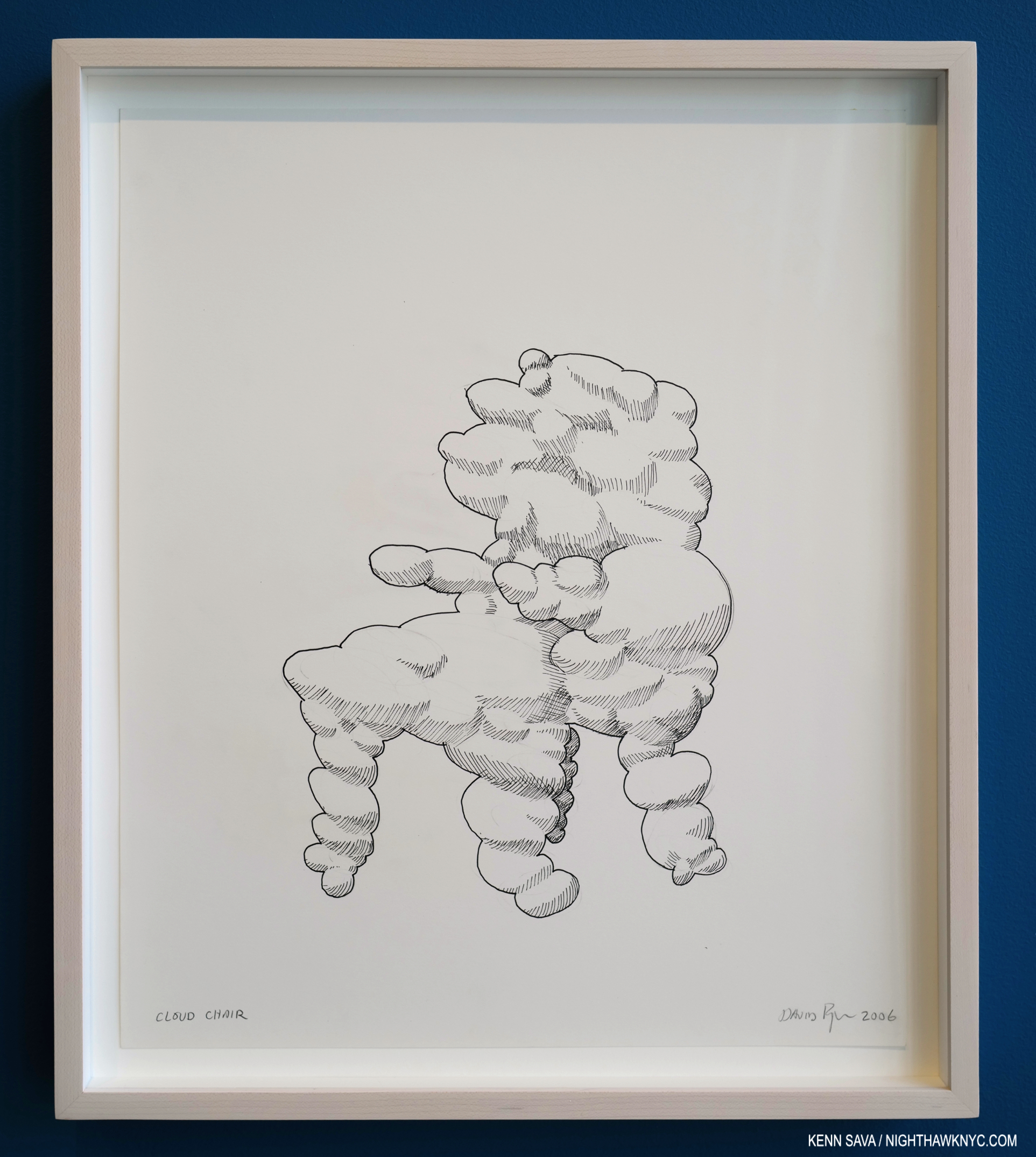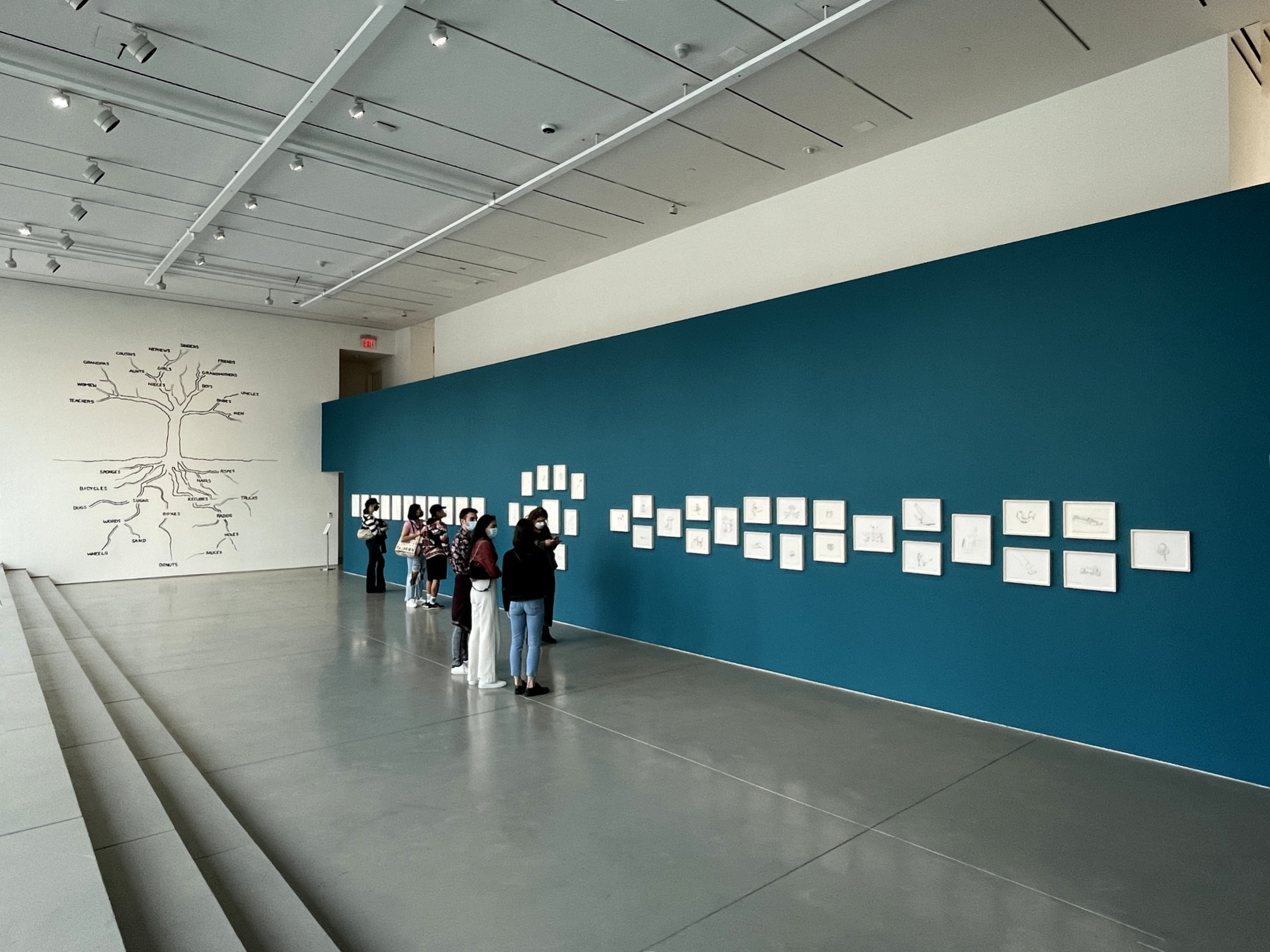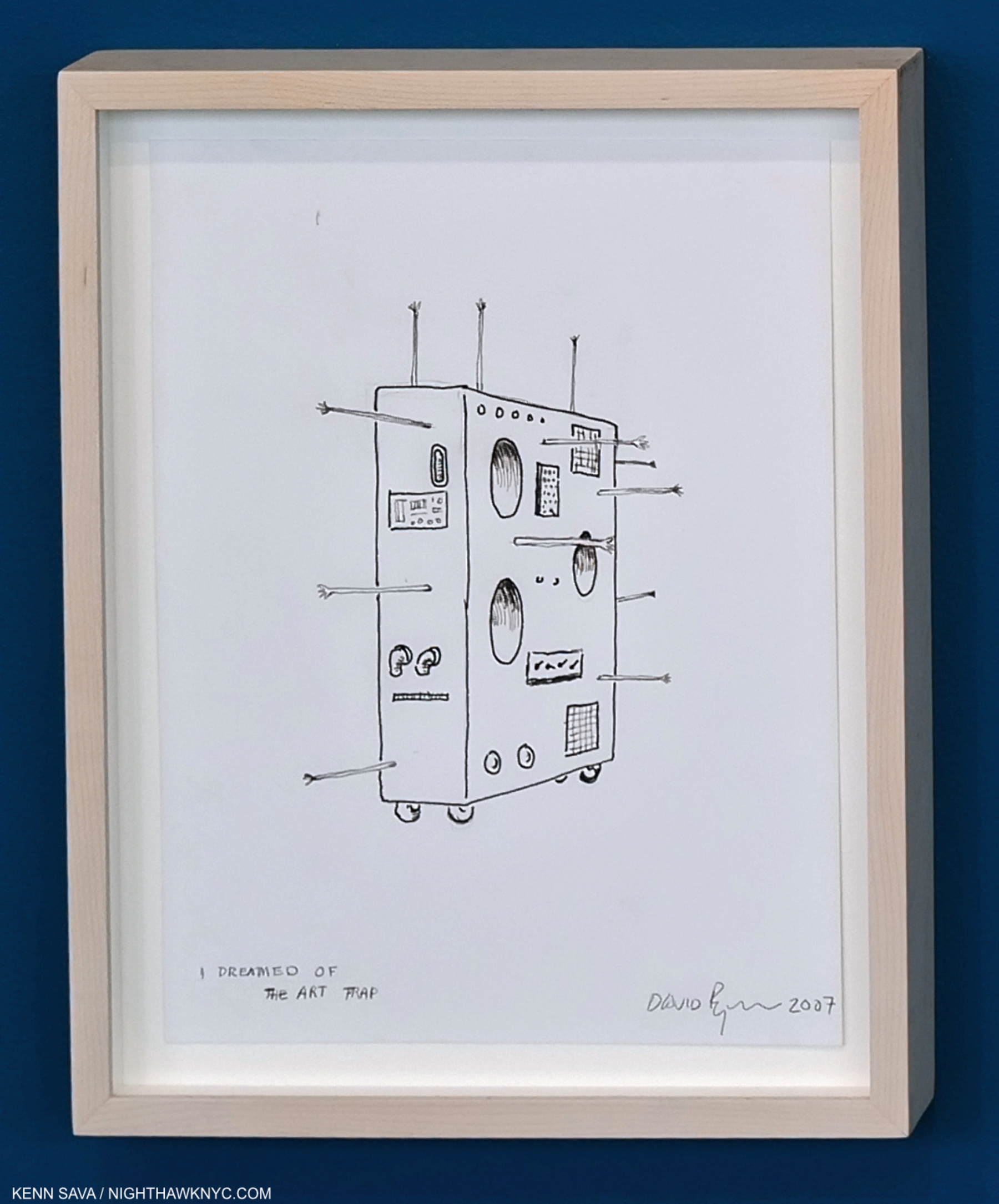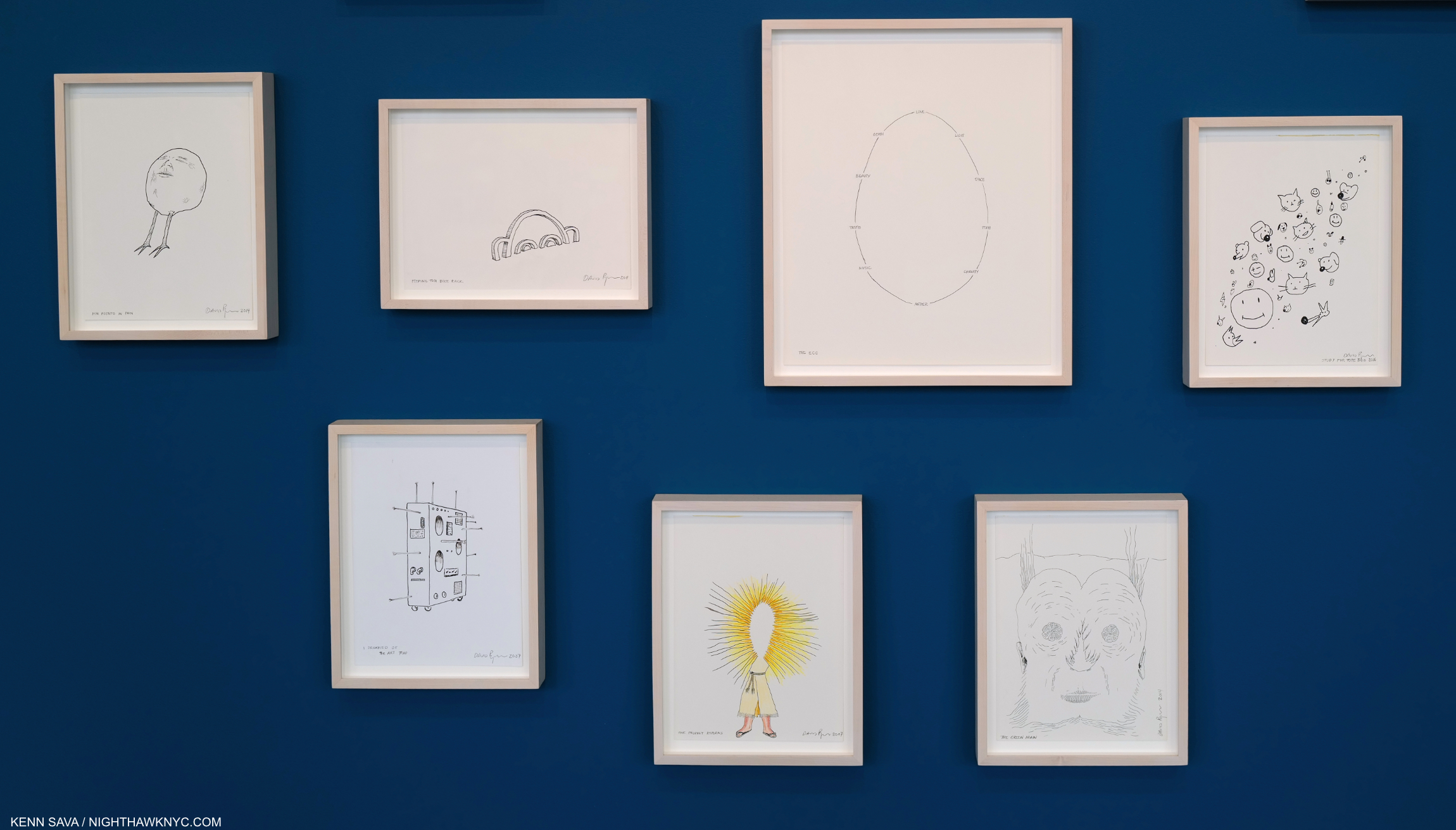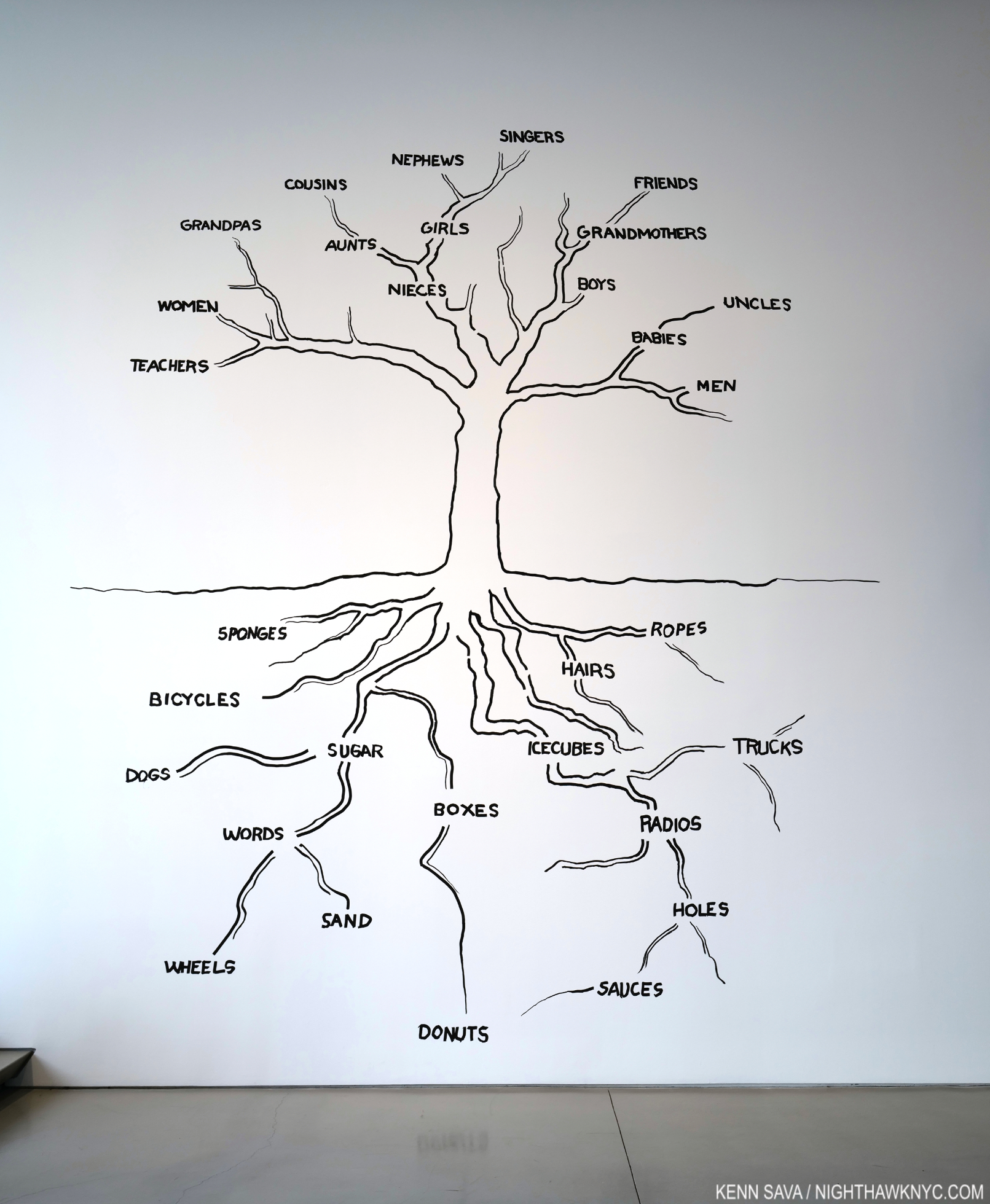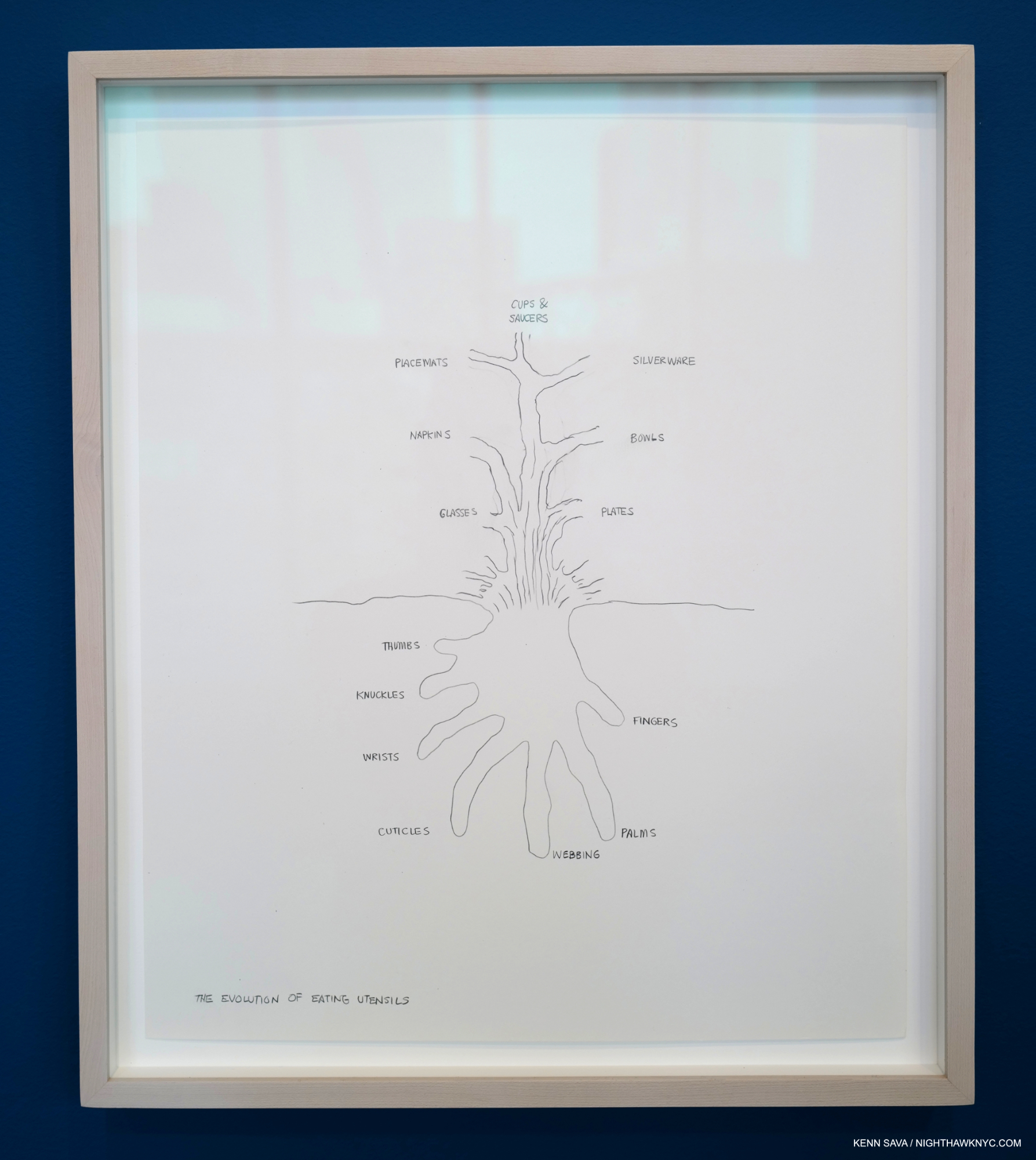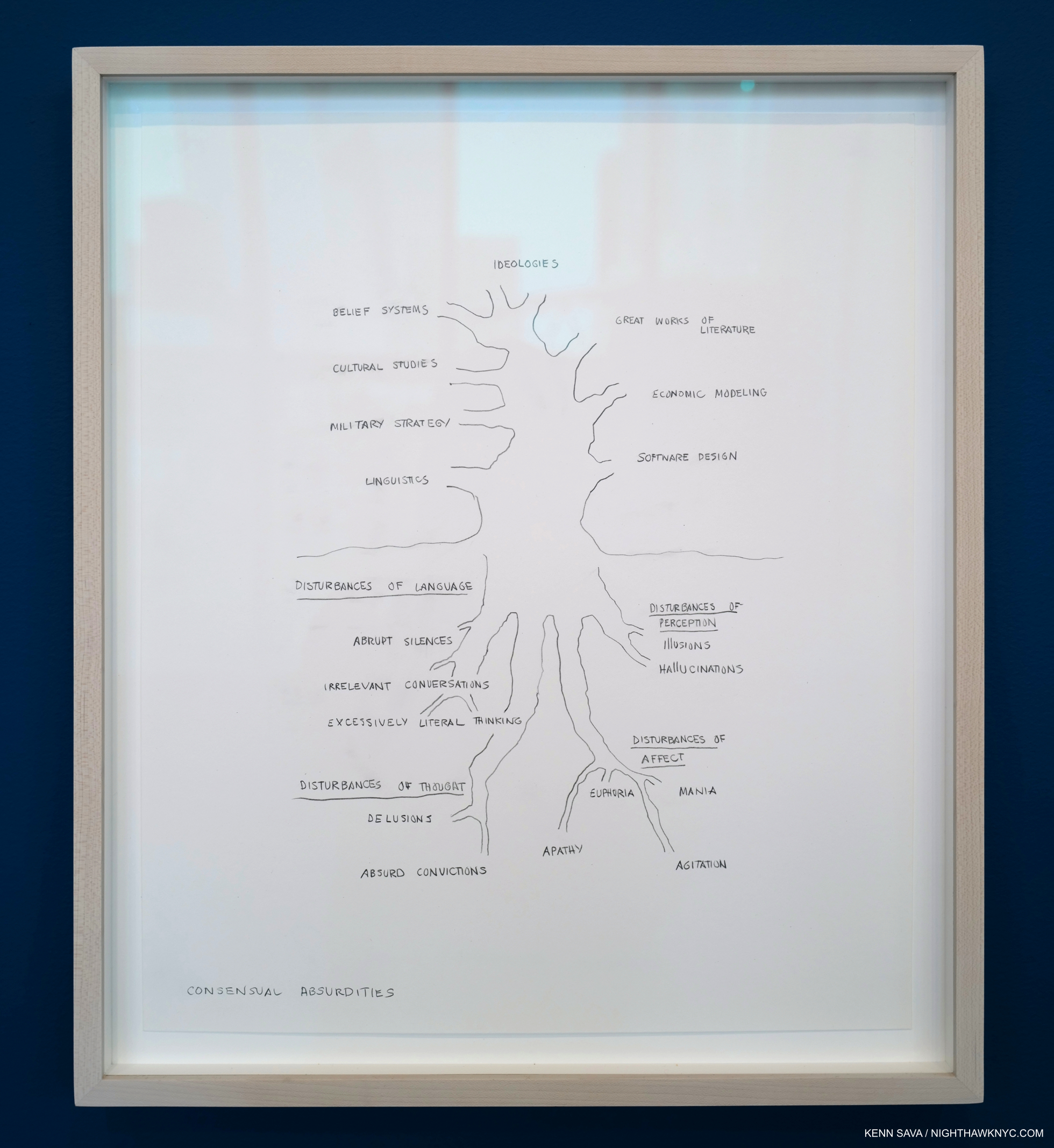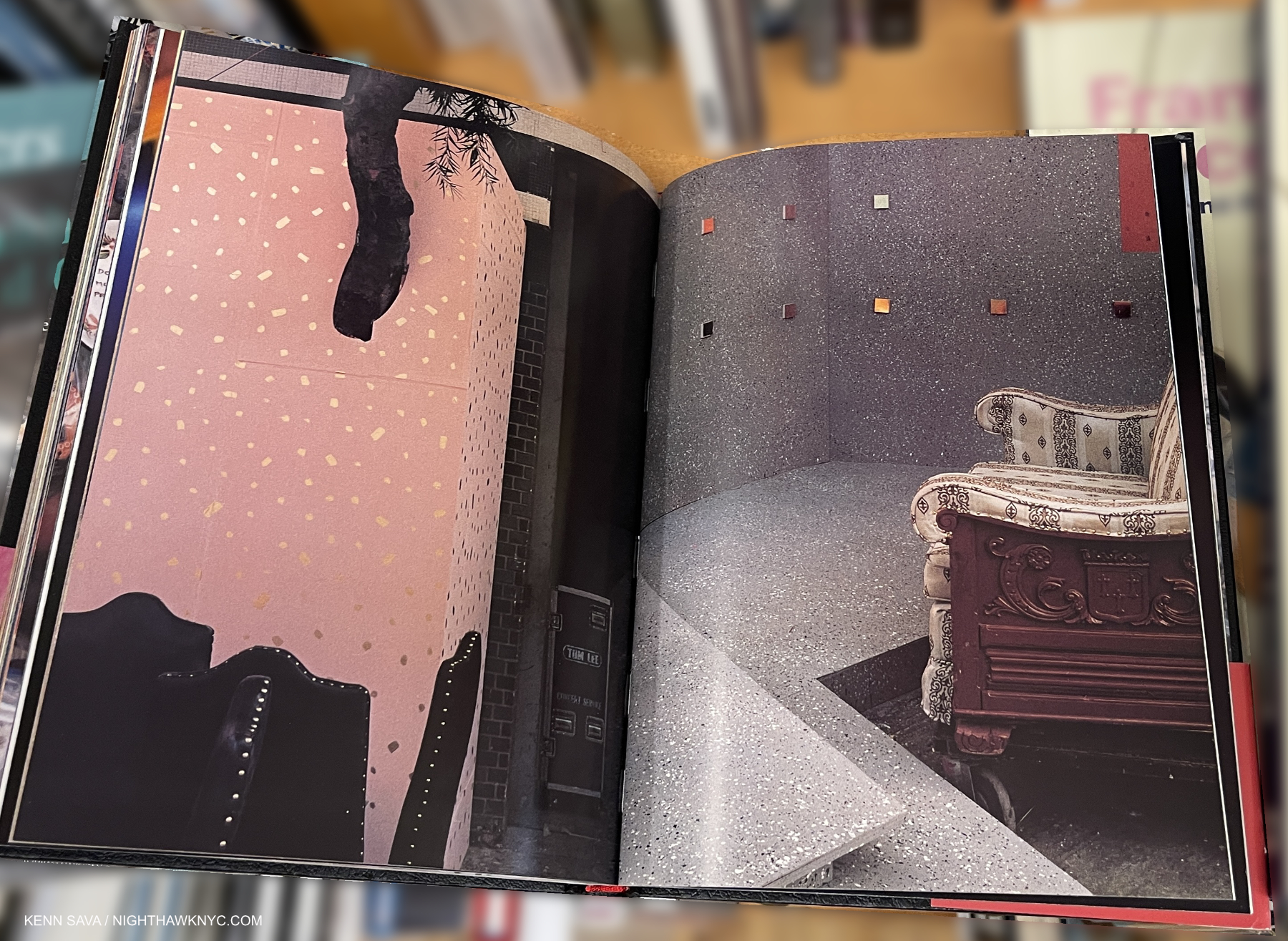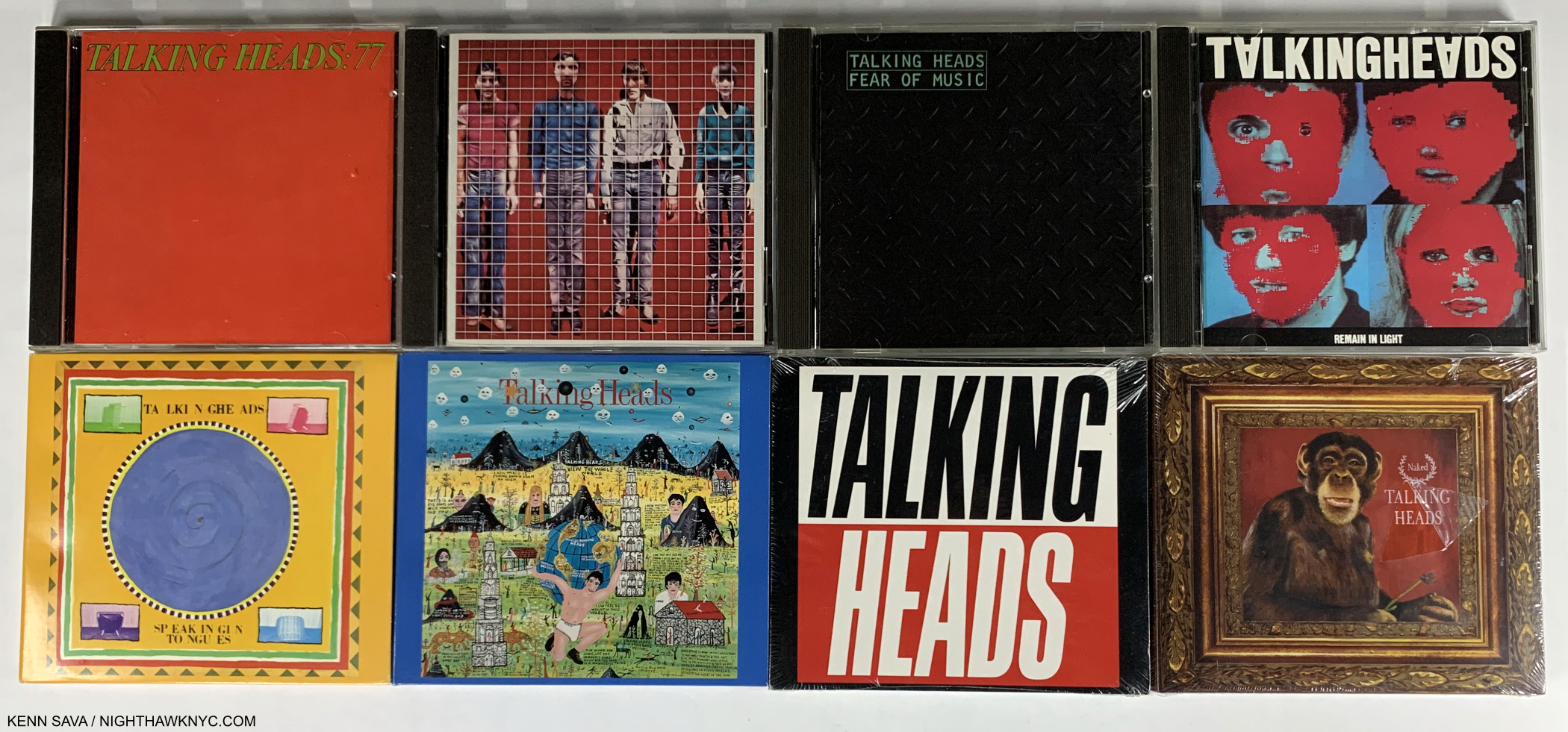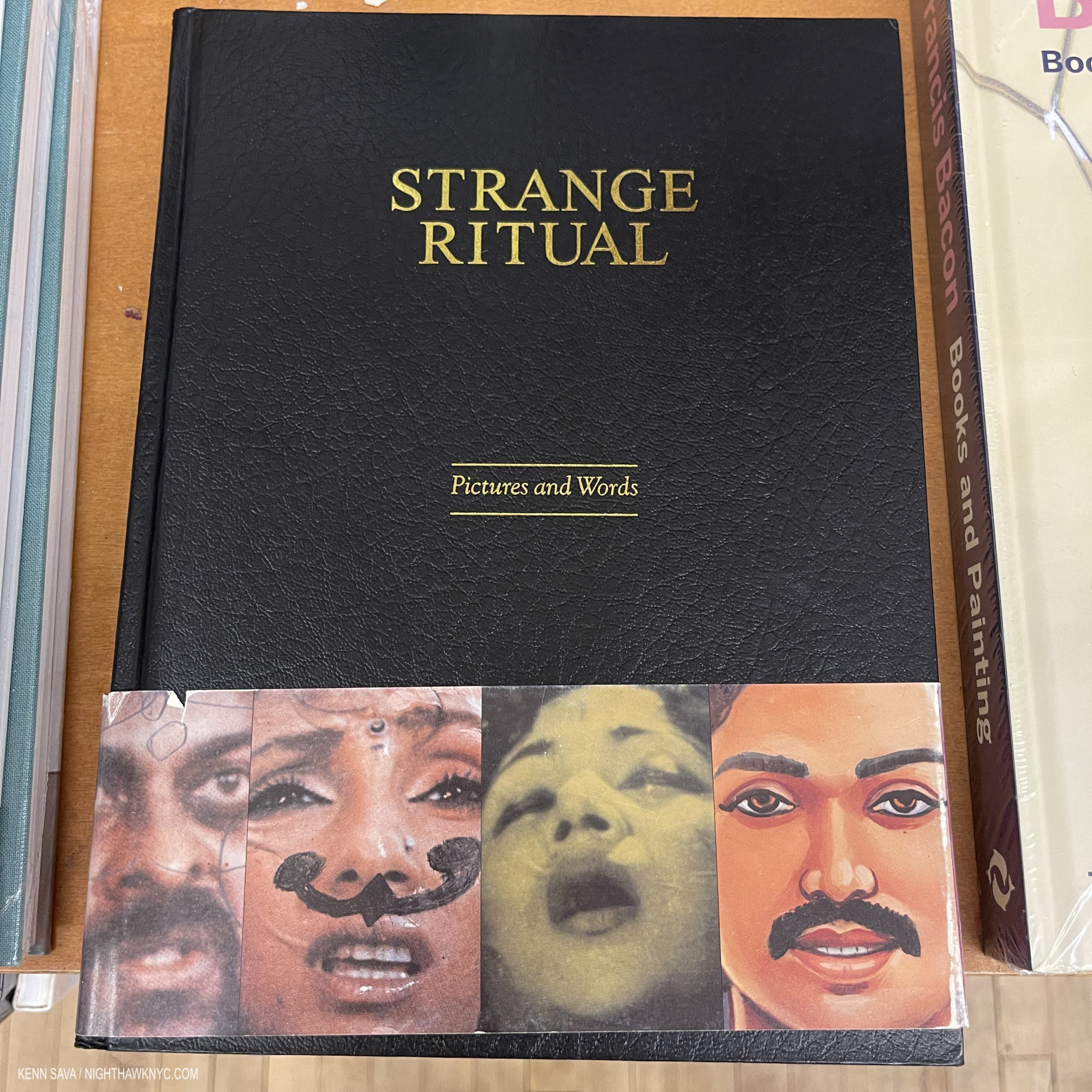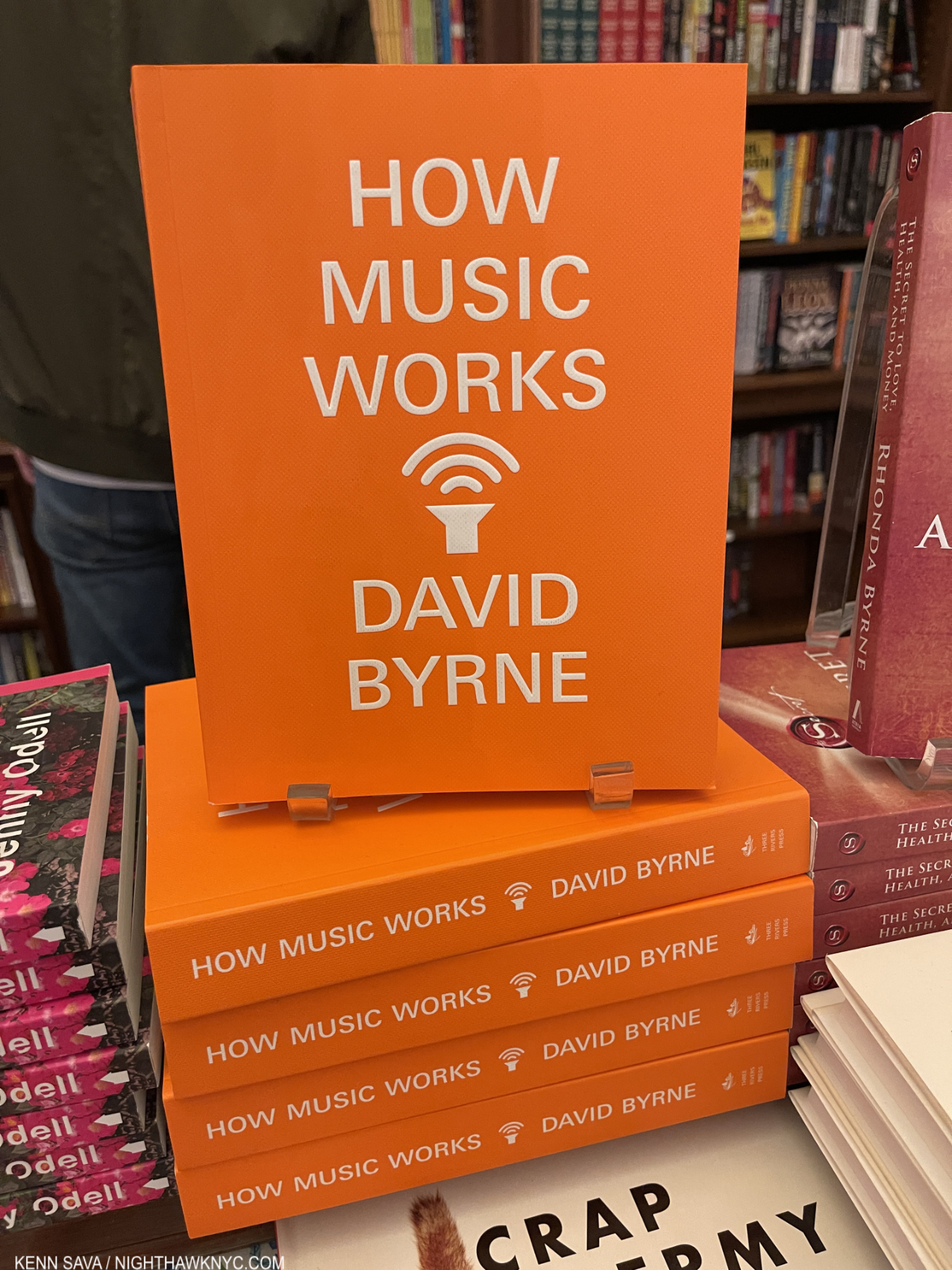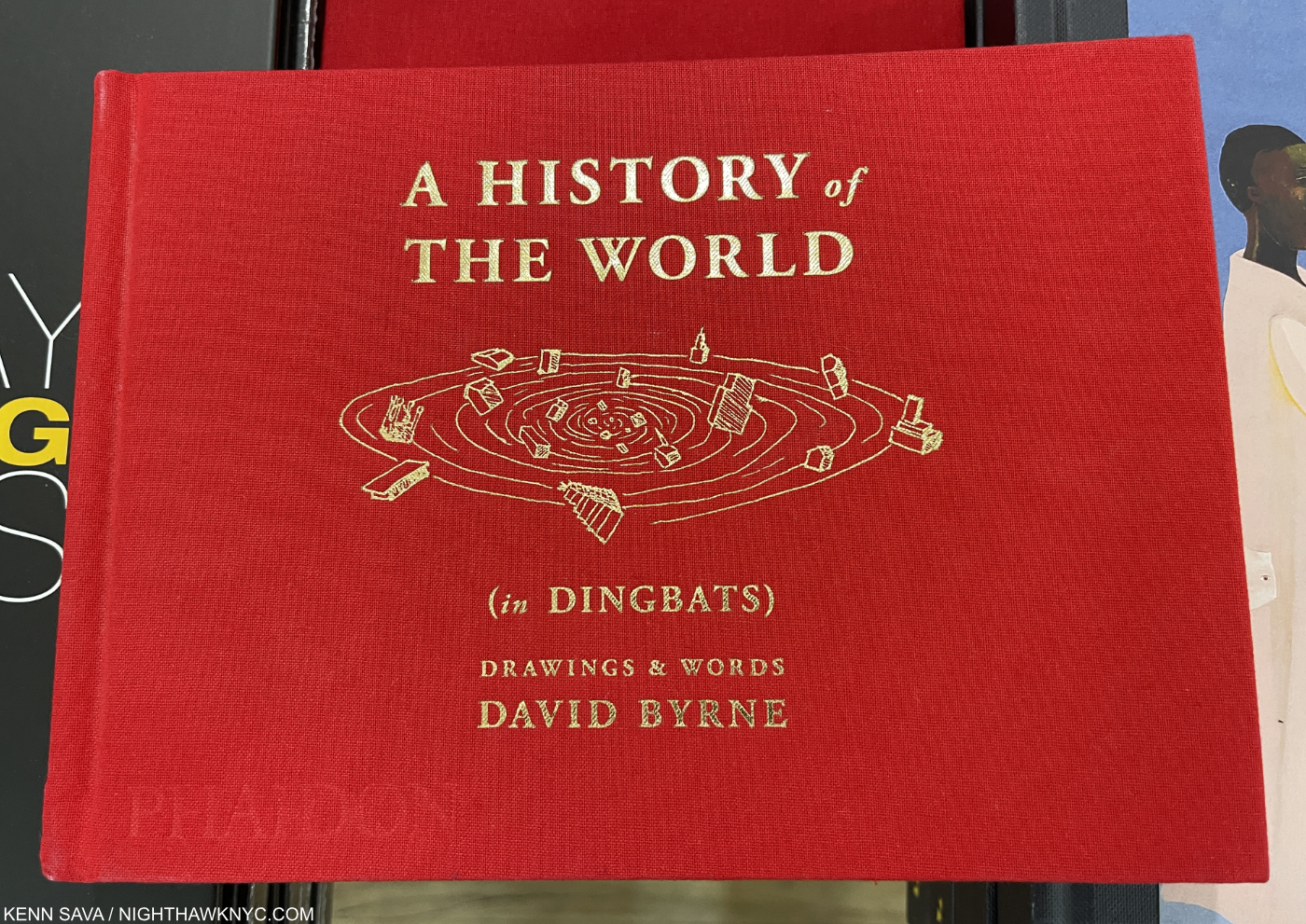Show Seen: David Byrne: How I Learned About Non-Rational Logic at Pace Gallery
David Byrne has never been bashful about stepping out. First, as the the very strange, gangly, guy you couldn’t take your eyes off of with the legendary band Talking Heads, then by himself as a solo, or in collaborations with Brian Eno, Twyla Tharp, and St. Vincent, among others; in Films along the way (as an actor, director, or Oscar-winning composer), as a Photographer in his overlooked PhotoBook, Strange Ritual, and most recently in an acclaimed & successful one-man Broadway show, American Utopia.
Phew!
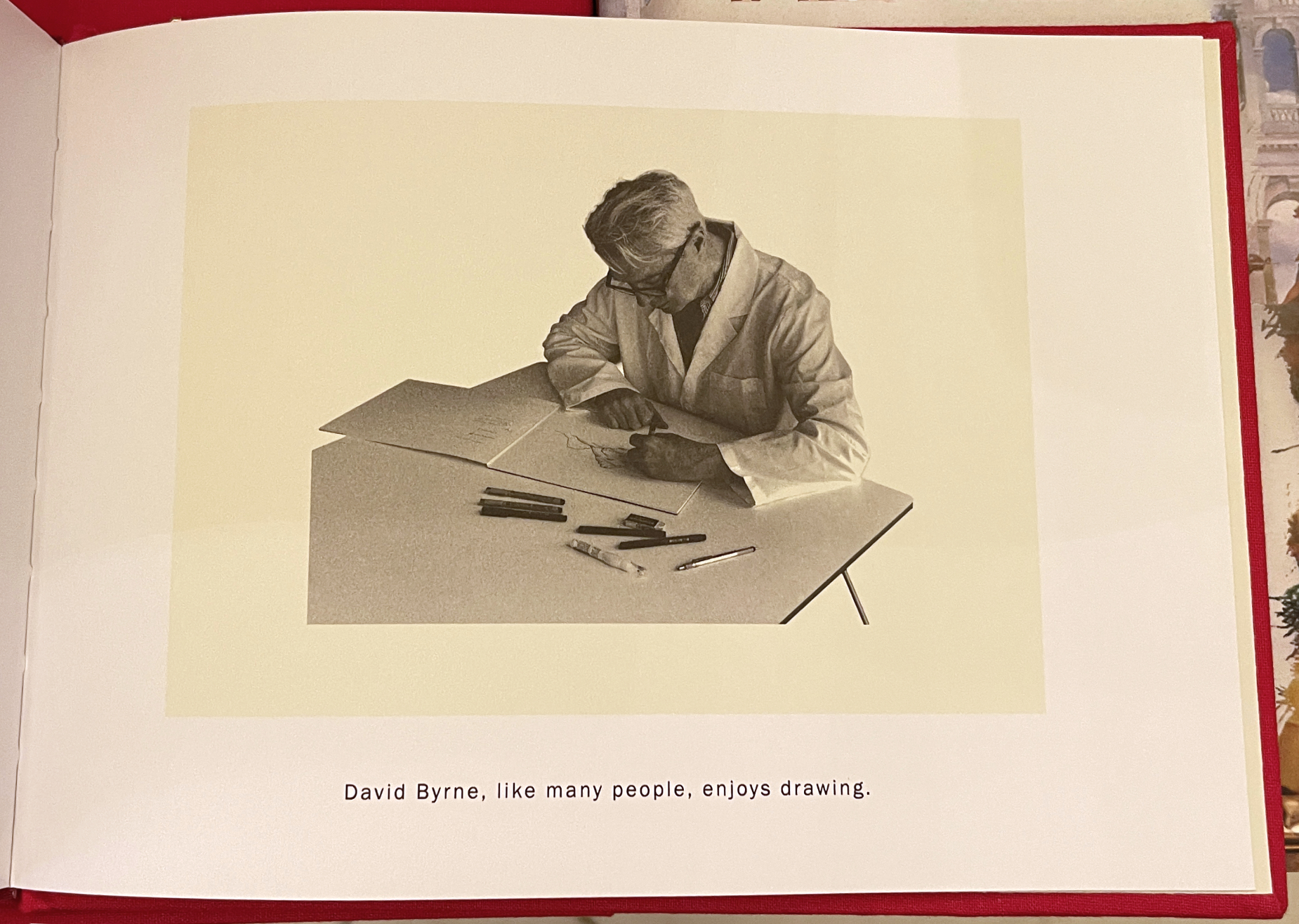
Me too. I spent a decade drawing every day and going to The Met to draw 3 times a week, even though I had a full-time job nowhere close to The Museum. It’s solitary, but rewarding in more ways than one.
As if that’s not enough, while American Utopia was still running on Broadway, came something else- a “mini retrospective” of his Drawings titled David Byrne: How I Learned About Non-Rational Logic, that ran from Feb 2 through March 19th, already his 8th show at Pace. The show included a selection of work dating back about 20 years, including a group of his Tree Drawings from the early 2000s, as seen in his book Arboretum, a group of Chair Drawings from 2004-7, and a group of Dingbat Drawings Mr. Byrne did during the pandemic. Some of his Dingbats were shown in a 2020 online show of that title. Always interested in what Mr. Byrne is doing, and what I can learn from it, and an eternal lover of the Art & essential skill that is Drawing, I took the elevator to the top floor of Pace’s new mega gallery on West 25th to take a look.
The show coincided with the release of his latest book, the astonishingly popular A History of the World (In Dingbats); a collection of 100 Drawings. Not to be confused stylistically with his earlier Drawings, the Dingbats are more “traditional” Drawings that range across a wide variety of subjects, IF you can call ANYTHING David Byrne does “traditional.”
The show’s title, How I Learned About Non-Rational Logic, sounds like an open invitation to learn how to think like Mr. Byrne. The range of styles on view gave the viewer the chance to approach that from a few directions that ranged from the apparently quite accessible to obtuse. I guess that’s saying there was something for everyone. On a wall near the entrance was something of an Artist’s Statement, quoted in part-
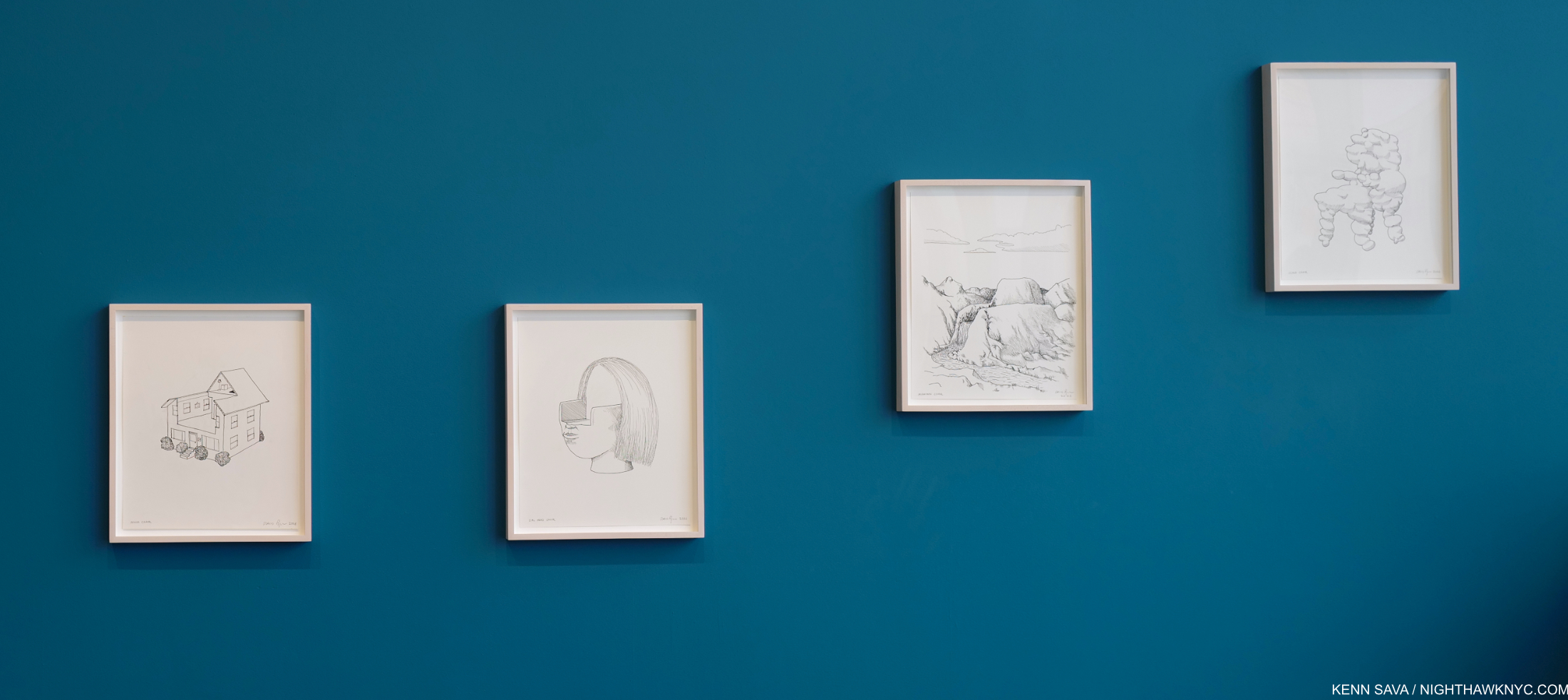
A series of “Chair” Drawings from 2006, Ink on paper. The piece on the far right, Cloud Chair, is shown earlier.
“I’m an ordinary guy
Burning down the house1“
After all he’s done to this point, it appears that David Byrne is David Byrne’s greatest creation. So, how to think like he does? I think you start by taking the essence of yourself, then throw out everything that’s too derivative of what someone else has done (“Stop Making Sense?”), and then emphasize what makes you unique. Along the way you can put down in Music, Film, on stage or on paper, things you see that no one else does. At least not in your own unique way!
Like these-
Between his Music, his Films, his Photography, his stage work, and now his Art, as time has gone on, we’re continuing to see there is more…much more, to David Byrne than anyone could ever imagine when that very strange, gangly guy walked on stage with Talking Heads at CBGB in 1977. I hope he continues to amaze and puzzle us for decades to come.
BookMarks-
The most succinct thing to say about David Byrne is that I can think of nothing he has done to not recommend. Some may not be as big fans of The Catherine Wheel, or his album The Forest, but that’s splitting hairs. As the late, great Jaco Pastorius once told me when I told him I liked his work with Joni Mitchell “better” than her earlier work- “Hey man. You either like an Artist or you don’t.” The man has had an important career and written innumerable great songs. Since the surprise hit show American Utopia is introducing him to many new fans, I’ll just give a quick rundown here-
Starting from the beginning, ALL the Talking Heads albums are classics in my book. I gave it some thought and really couldn’t pick one to start with. Remain in Light? Fear of Music? The Dual Disc reissues with added tracks are particularly recommended, if you can find them reasonably priced. The complete Dual Brick of all 8 studio Lps on CD/DVD Dual Disc currently goes for $200 to $250 being out of print. Though you’ll gain more Music, the sanctity of the original album should be kept firmly in mind (which is included on the DVD in 5.1 Surround Sound, overseen by Jerry Harrison), though it’s hard to replicate the impact it had when each were released, now. In the midst of punk, Talking Heads seamlessly walked the line between punk and New Wave, if they did not singlehandedly define the latter. I remember it well. I wound up in a New Wave band the year after Talking Heads ’77 came out!
Stop Making Sense is a must-see concert Film. True Stories…I haven’t seen in a while, but it’s on my list to see again.
His work with Brian Eno has many fans.
I thought his collaboration with St. Vincent, Love This Giant. was wonderful. After they got it out on the road with punchy arrangements (I started out as a horn player, and there’s still nothing like the sound of live horns for me!), it sounds even better-
And then there are his countless solo albums. I’m still working my way through them. One thing I can say is those I’ve heard don’t sound dated.
Personally, I really like his PhotoBook Strange Ritual, though I advise you to take a look through it before deciding to buy. It’s not for everyone.
Arboretum is Artistic while showing a different way of thinking. I think the concept, a sample shown above and in other works in the show, works very well throughout. I think it’s a book that’s going to remain sought after.
How Music Works is a uniquely down to earth look at Music & the business of. As much a “field guide” for the working Musician as it is a book for listeners and his fans. Most books like it are written by Music business people or lawyers. Uggh. This one is written from the REAL inside by someone who counts- a Musician who’s done it all AND succeeded at all of it!
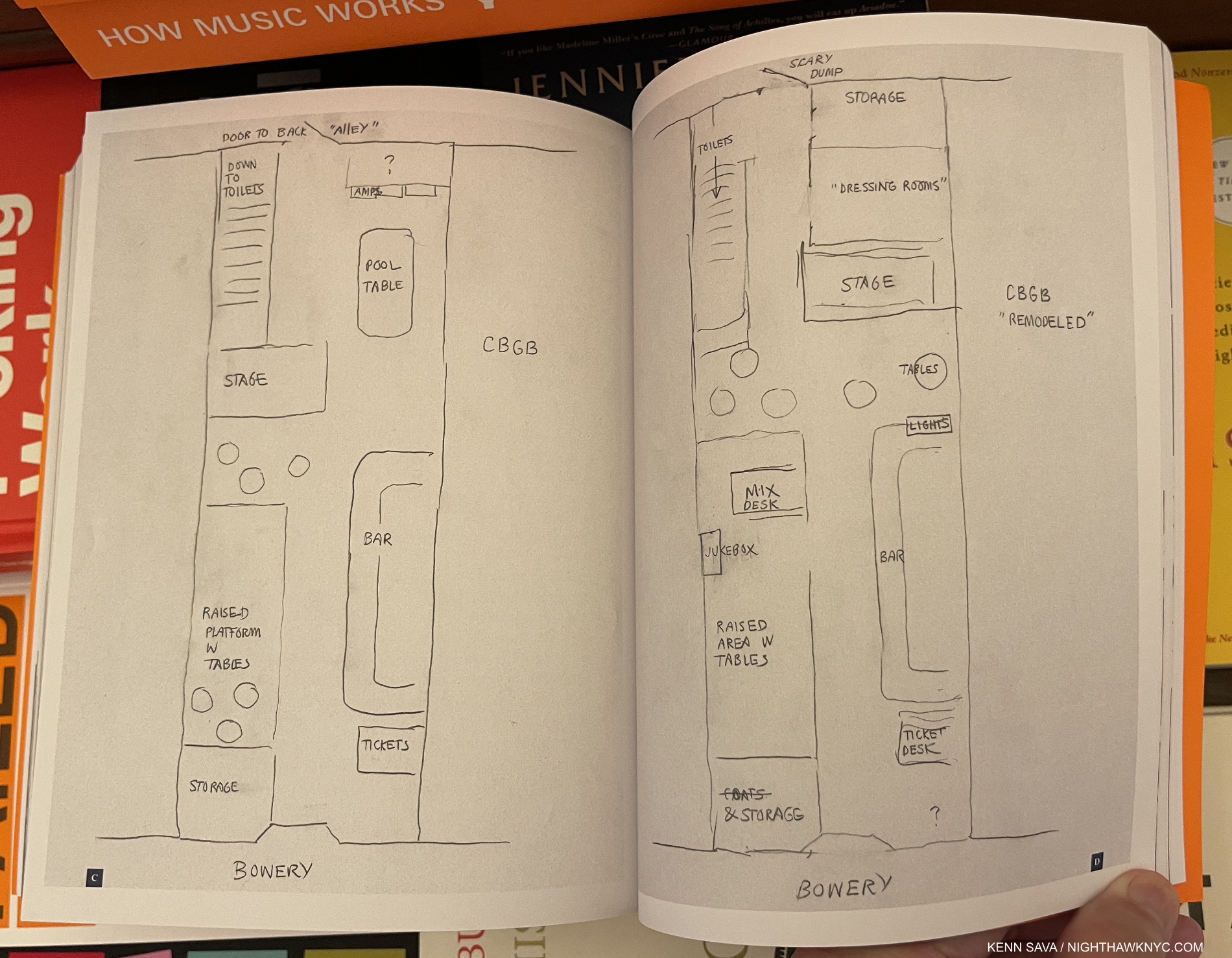
It includes sketches of CBGB’s, a club that Mr. Byrne helped make immortal, seen here before, left, & after its remodeling, right. I spent many, many a night on the right, a few on the left..In the mid-1990s, I booked Music into CB’s Gallery, another Music club CBGB later opened in the space to the right where the Drawing is labelled “CBGB” and “CBGB “Remodeled'”
A History of the World (In Dingbats) is one of those Art Books that may seem easy to write off at first, but then keeps surprising & intriguing you. I’ve been amazed watching it sell out everywhere. Say what you will about it- it’s speaking to a wide range of folks. Almost ANY book of Drawings that reaches people these days is probably going to be a book I am fond on. This one counts.
*-Soundtrack for this Post is “Born Under Punches” by David Byrne & Talking Heads from their album Remain in Light, 1980.
NighthawkNYC.com has been entirely self-funded and ad-free for over 6 years, during which over 250 full length pieces have been published. As I face high expenses to keep it going, if you’ve found it worthwhile, please donate to keep it up & ad-free below. Thank you!
Written & photographed by Kenn Sava for nighthawknyc.com unless otherwise credited.
To send comments, thoughts, feedback or propositions click here.
Click the white box on the upper right for the archives or to search them.
For “short takes” and additional pictures, follow @nighthawk_nyc on Instagram.
Subscribe to be notified of new Posts below. Your information will be used for no other purpose.
- “Burning Down The House,” Speaking in Tongues, 1983 ↩

